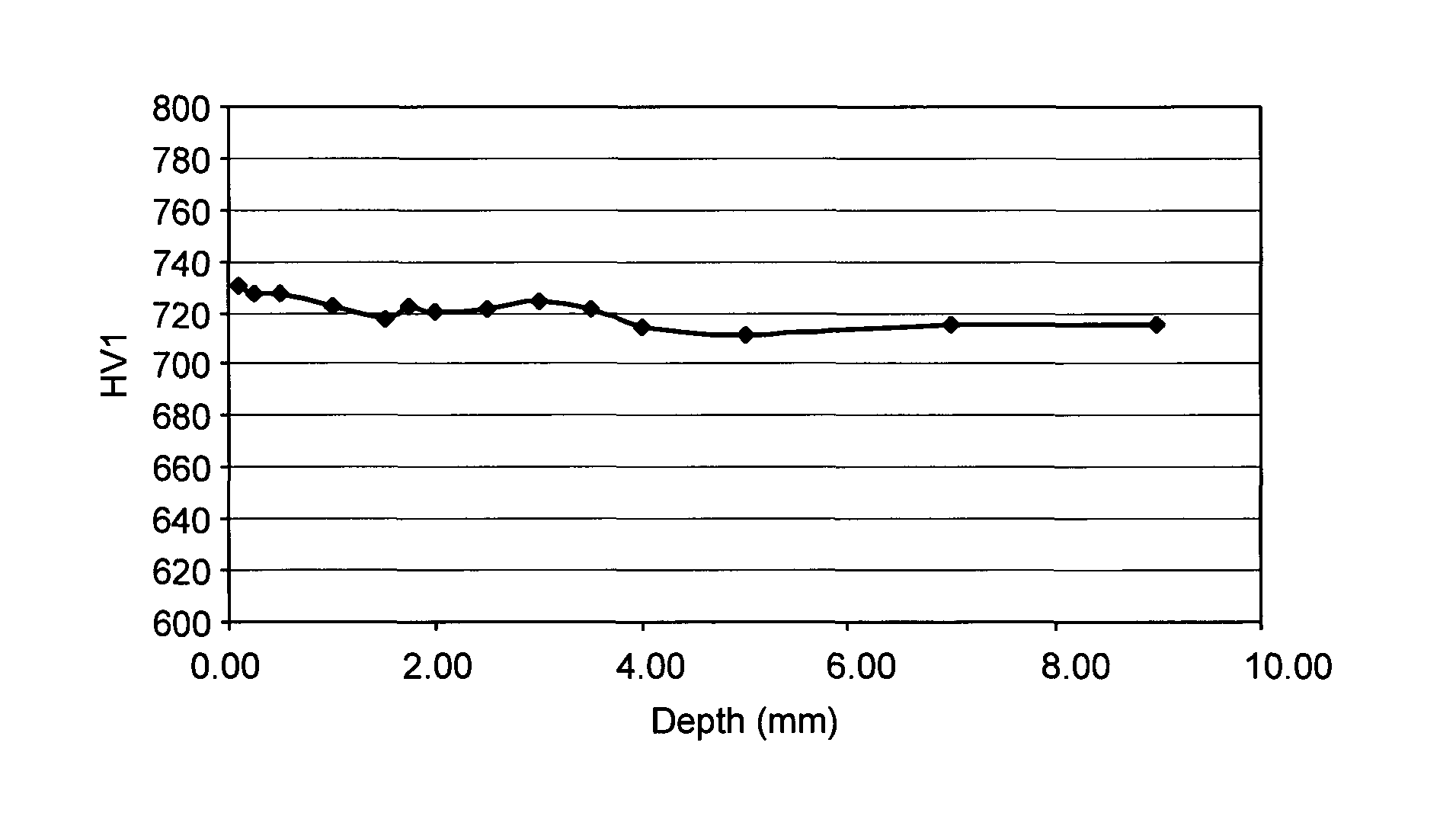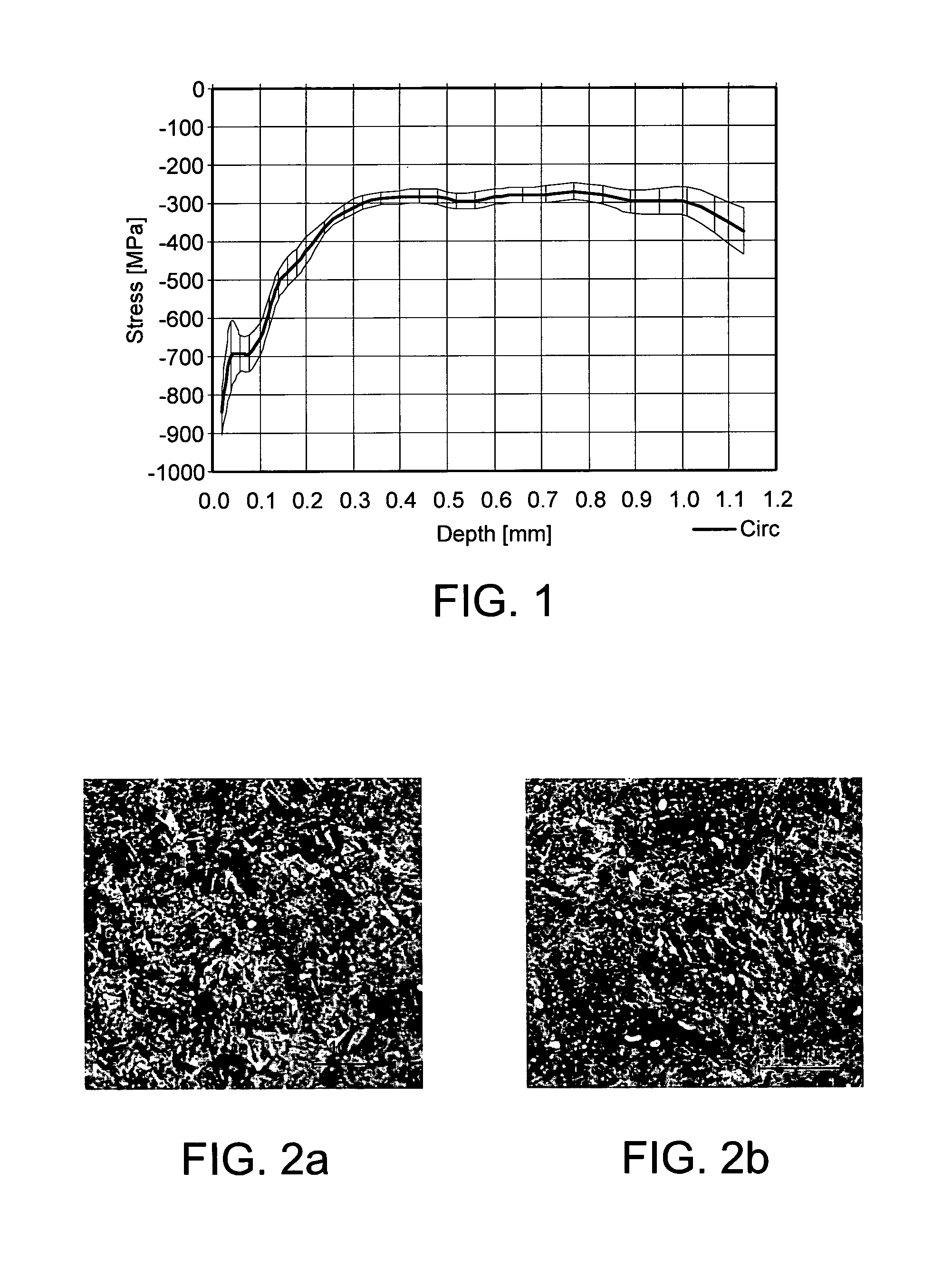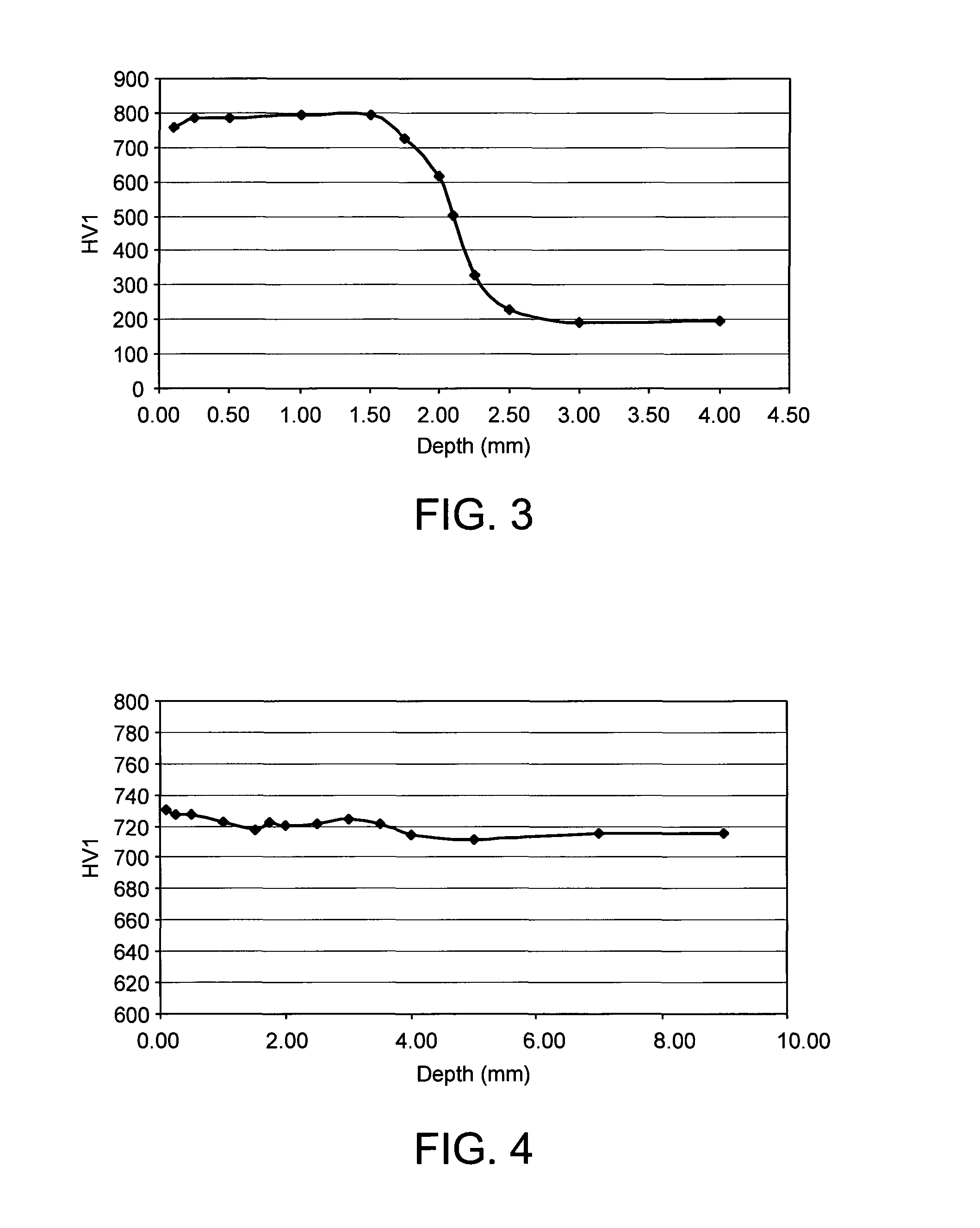Method of heat treating a steel bearing component
a technology of bearing components and heat treatment methods, which is applied in the field of metalurgy and to bearing components, can solve the problems of adding production costs, additional steps to be taken to improve surface finish, etc., and achieves the effect of promoting crs and low hardening temperatur
- Summary
- Abstract
- Description
- Claims
- Application Information
AI Technical Summary
Benefits of technology
Problems solved by technology
Method used
Image
Examples
example 1
Pre-processing and Bainite Rehardening
[0070]Test component: Spherical roller bearing (SRB) outer ring with OD 180 mm formed from 100Cr6 steel.
[0071]Pre-processing: Inductive surface heating using ˜10 kHz to reach a surface temperature of ˜1050° C. and a pre-processing depth of ˜2 mm, followed by quenching using a 5% Aquaquench polymer solution.
[0072]Bainite-through hardening: Furnace rehardening using 820° C. and 20 minute soaking time, followed by quenching and transformation in ˜230° C. molten Petrofer AS140 salt for 240 minutes, followed by cooling in still air.
[0073]FIG. 1 is a plot showing the compressive residual stress profile for the component of Example 1. The plot shows a near surface CRS of −300 to −800 MPa. The CRS is maintained at −300 down to at least 1.2 mm.
[0074]FIGS. 2a and2b are micrographs showing the surface (a) and core (b) microstructures for the component of Example 1. The micrographs show a bainite microstructure. The surface microstructure is slightly coarse...
example 2
Bainite through Hardening and Post-Processing
[0077]Test component: Cylindrical roller bearing (CRE) inner ring with OD 120 mm formed from 100Cr6 steel
[0078]Bainite through-hardening: Furnace rehardening using 860° C. and 20 min soaking time, followed by quenching and transformation in ˜230° C. molten Petrofer AS140 salt for 240 min, followed by cooling in still air.
[0079]Post-processing: Inductive surface heating using ˜8 kHz to reach a surface temperature of ˜940° C. and a case depth of ˜1.8 mm, followed by quenching using a 5% Aquatensid polymer quench solution and tempering at 160° C. for 60 min
[0080]FIG. 5 is a plot showing the compressive residual stress profile for the component of Example 2 after the heat-treatment and compared to standard martensite and standard bainite.
[0081]FIGS. 6a, 6b and 6c are micrographs showing the surface (a), transitional zone (b), and core (c) microstructures for the component of Example 2 after the bainite through-hardening and induction heating ...
example 3
Martensite through Hardening and Post-Processing Under Interference Fit
[0083]Test component: Deep groove ball bearing (DGBB) inner ring with OD 62 mm formed from 100Cr6 steel
[0084]Martensite through Hardening: Furnace rehardening using 860° C. and 20 min soaking time, followed by oil quenching in 60° C. oil and tempering at 160° C. for 60 min
[0085]Post-processing: Mounting on over-sized shaft resulting in hoop-stress. Inductive surface heating using ˜90 kHz to reach a surface temperature of ˜940° C. and a case depth of ˜1.8 mm, followed by quenching using a 5% Aquatensid polymer quench solution and tempering at 160° C. for 60 min. Removal of shaft.
[0086]FIG. 8 is a plot showing the CRS profile for the component of Example 3 after the martensite through-hardening and induction heating steps with different levels of hoop stress.
PUM
| Property | Measurement | Unit |
|---|---|---|
| depth | aaaaa | aaaaa |
| depth | aaaaa | aaaaa |
| temperature | aaaaa | aaaaa |
Abstract
Description
Claims
Application Information
 Login to View More
Login to View More - R&D
- Intellectual Property
- Life Sciences
- Materials
- Tech Scout
- Unparalleled Data Quality
- Higher Quality Content
- 60% Fewer Hallucinations
Browse by: Latest US Patents, China's latest patents, Technical Efficacy Thesaurus, Application Domain, Technology Topic, Popular Technical Reports.
© 2025 PatSnap. All rights reserved.Legal|Privacy policy|Modern Slavery Act Transparency Statement|Sitemap|About US| Contact US: help@patsnap.com



